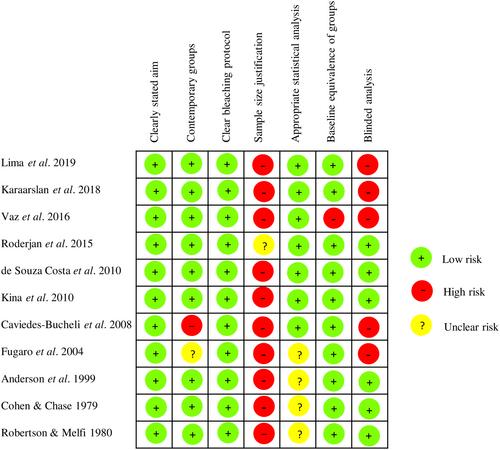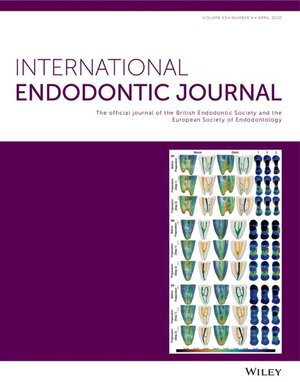Although several studies indicate the harmful effects of bleaching on pulp tissue, the demand for this procedure using high concentrations of hydrogen peroxide (HP) is high.
To investigate the influence of bleaching on the pulp tissue.
Electronic searches were conducted (PubMed/MEDLINE, Scopus, Cochrane Library and grey literature) until February 2021. Only in vivo studies that evaluated the effects of HP and/or carbamide peroxide (CP) bleaching gels on the inflammatory response in the pulp tissue compared with a non-bleached group were included. Risk of bias was performed according to a modified Methodological Index for Non-Randomized Studies scale for human studies and the Systematic Review Centre for Laboratory Animal Experimentation's RoB tool for animal studies. Meta-analysis was unfeasible.
Of the 1311 studies, 30 were eligible. Of these, 18 studies evaluated the inflammatory response in animal models. All these studies reported a moderate-to-strong inflammatory response in the superficial regions of pulp, characterized by cell disorganization and necrotic areas, particularly during the initial periods following exposure to 35%–38% HP, for 30–40 min. In the evaluation of human teeth across 11 studies, seven investigated inflammatory responses, with five observing significant inflammation in the pulp of bleached teeth. In terms of tertiary dentine deposition, 11 out of 12 studies noted its occurrence after bleaching with 35%–38% HP in long-term assessments. Additionally, three studies reported significant levels of osteocalcin/osteopontin at 2 or 10 days post-treatment. Other studies indicated an increase in pro-inflammatory cytokines ranging from immediately up to 10 days after bleaching. Studies using humans' teeth had a low risk of bias, whereas animal studies had a high risk of bias.
Despite the heterogeneity in bleaching protocols among studies, High-concentrations of HP shows the potential to induce significant pulp damage.
High-concentrations of bleaching gel increases inflammatory response and necrosis in the pulp tissue at short periods after bleaching, mainly in rat molars and in human incisors, in addition to greater hard tissue deposition over time. However, further well-described histological studies with long-term follow-up are encouraged due to the methodological limitations of these studies.
PROSPERO (CRD42021230937).



